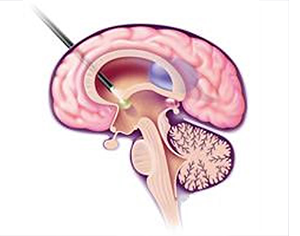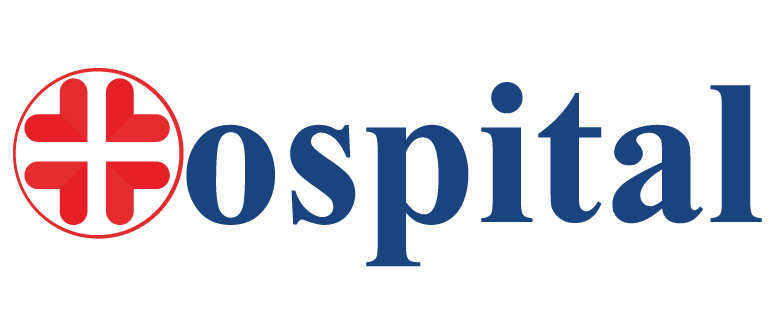
Neuroendoscopy is a minimally-invasive surgical procedure in which the neurosurgeon removes the tumor by creating small holes which are about the size of a dime in the skull or through the mouth or nose.
Neuroendoscopy enables neurosurgeons to access those areas of the brain that cannot be reached with traditional surgery as well as remove the tumor without harming other parts of the skull.
The procedure is usually performed by using an endoscope which is a small telescope-like device equipped with a high-resolution video camera and eyepiece on the end to allow the neurosurgeon to navigate and access the tumor.
How Neuroendoscopy may benefit?
Types of Brain Tumors treated with Neuroendoscopy
Pineal region tumors: A pineal tumor forms in the pineal gland which is a tiny gland in the middle of the head. It produces a hormone called melatonin that affects the sleep-wake cycles. Pineal tumors are very rare tumors.
Pituitary tumors: Pituitary tumors are abnormal growth that develops in the pituitary gland. Some tumors result in the secretion of more hormones that regulate important functions of your body while some can cause your pituitary gland to produce lower levels of hormones. Most pituitary tumors are noncancerous or benign growths referred to as ‘adenomas’. Adenomas remain in the pituitary gland or surrounding tissues and don't spread to other parts of your body.
Rathke's cleft cysts: A Rathke's cleft cyst is a benign growth found on the pituitary gland in the brain. It occurs when the Rathke's pouch which is an evagination at the roof of the developing mouth in front of the buccopharyngeal membrane does not develop properly and ranges in size from 2 to 40 mm in diameter.
Skull base tumors: A skull base tumor is an abnormal growth in the part of the brain that meets the base of the skull. Most of these tumors are benign and do not spread to other parts of the body. However, those which grow slowly can cause serious damage.
Ventricular tumors: Ventricular tumors are generally benign tumors or lesions found within the ventricles of the brain and may arise from a variety of cells in the region and often obstruct the flow of cerebrospinal fluid and cause a buildup of pressure in the skull.
What is a neuro endoscopy?
Neuroendoscopy is a minimally-invasive surgical procedure in which the neurosurgeon removes the tumor through small holes (about the size of a dime) in the skull or through the mouth or nose.
What is done in Neuro-endoscopy?
This minimally invasive surgery technique uses specialized endoscopes with high-resolution video cameras to perform surgery of the brain.
How is the recovery?
Smaller incisions and bony openings often result in less pain and shorter hospital stays.
Types of Brain Tumors treated with Neuroendoscopy
Pineal region tumors: A pineal tumor forms in the pineal gland which is a tiny gland in the middle of the head. It produces a hormone called melatonin that affects the sleep-wake cycles. Pineal tumors are very rare tumors.
Pituitary tumors: Pituitary tumors are abnormal growth that develops in the pituitary gland. Some tumors result in the secretion of more hormones that regulate important functions of your body while some can cause your pituitary gland to produce lower levels of hormones. Most pituitary tumors are noncancerous or benign growths referred to as ‘adenomas’. Adenomas remain in the pituitary gland or surrounding tissues and don't spread to other parts of your body.
Rathke's cleft cysts: A Rathke's cleft cyst is a benign growth found on the pituitary gland in the brain. It occurs when the Rathke's pouch which is an evagination at the roof of the developing mouth in front of the buccopharyngeal membrane does not develop properly and ranges in size from 2 to 40 mm in diameter.
Skull base tumors: A skull base tumor is an abnormal growth in the part of the brain that meets the base of the skull. Most of these tumors are benign and do not spread to other parts of the body. However, those which grow slowly can cause serious damage.
Ventricular tumors: Ventricular tumors are generally benign tumors or lesions found within the ventricles of the brain and may arise from a variety of cells in the region and often obstruct the flow of cerebrospinal fluid and cause a buildup of pressure in the skull.
What is a neuro endoscopy?
Neuroendoscopy is a minimally-invasive surgical procedure in which the neurosurgeon removes the tumor through small holes (about the size of a dime) in the skull or through the mouth or nose.
What is done in Neuro-endoscopy?
This minimally invasive surgery technique uses specialized endoscopes with high-resolution video cameras to perform surgery of the brain.
How is the recovery?
Smaller incisions and bony openings often result in less pain and shorter hospital stays.

Rating :
Hospital Profile Description Currently Not Available

Rating :
Kairali was founded in the year 1989. But the effort behind started long back. People behind Kairali inherited Ayurveda from their fore fathers & propagating throughout the world. The true Ayurveda percolated through generations and never lost .....

Rating :
Hospital Profile Description Currently Not Available

Rating :
Vedic Sutra—A first of its kind Techno-Ayurveda centre was founded by doctor Anu Jaiswal to provide Therapies based on the unison of Technology with Ayurveda for curing the Ailments of Body.....
Rating :
Rating :
Hospital Profile Description Currently Not Available

Neuroendoscopy is a minimally-invasive surgical procedure in which the neurosurgeon removes the tumor by creating small holes which are about the size of a dime in the skull or through the mouth or nose.
Neuroendoscopy enables neurosurgeons to access those areas of the brain that cannot be reached with traditional surgery as well as remove the tumor without harming other parts of the skull.
The procedure is usually performed by using an endoscope which is a small telescope-like device equipped with a high-resolution video camera and eyepiece on the end to allow the neurosurgeon to navigate and access the tumor.
How Neuroendoscopy may benefit?
Types of Brain Tumors treated with Neuroendoscopy
Pineal region tumors: A pineal tumor forms in the pineal gland which is a tiny gland in the middle of the head. It produces a hormone called melatonin that affects the sleep-wake cycles. Pineal tumors are very rare tumors.
Pituitary tumors: Pituitary tumors are abnormal growth that develops in the pituitary gland. Some tumors result in the secretion of more hormones that regulate important functions of your body while some can cause your pituitary gland to produce lower levels of hormones. Most pituitary tumors are noncancerous or benign growths referred to as ‘adenomas’. Adenomas remain in the pituitary gland or surrounding tissues and don't spread to other parts of your body.
Rathke's cleft cysts: A Rathke's cleft cyst is a benign growth found on the pituitary gland in the brain. It occurs when the Rathke's pouch which is an evagination at the roof of the developing mouth in front of the buccopharyngeal membrane does not develop properly and ranges in size from 2 to 40 mm in diameter.
Skull base tumors: A skull base tumor is an abnormal growth in the part of the brain that meets the base of the skull. Most of these tumors are benign and do not spread to other parts of the body. However, those which grow slowly can cause serious damage.
Ventricular tumors: Ventricular tumors are generally benign tumors or lesions found within the ventricles of the brain and may arise from a variety of cells in the region and often obstruct the flow of cerebrospinal fluid and cause a buildup of pressure in the skull.
What is a neuro endoscopy?
Neuroendoscopy is a minimally-invasive surgical procedure in which the neurosurgeon removes the tumor through small holes (about the size of a dime) in the skull or through the mouth or nose.
What is done in Neuro-endoscopy?
This minimally invasive surgery technique uses specialized endoscopes with high-resolution video cameras to perform surgery of the brain.
How is the recovery?
Smaller incisions and bony openings often result in less pain and shorter hospital stays.

Rating :
Hospital Profile Description Currently Not Available

Rating :
Kairali was founded in the year 1989. But the effort behind started long back. People behind Kairali inherited Ayurveda from their fore fathers & propagating throughout the world. The true Ayurveda percolated through generations and never lost .....

Rating :
Hospital Profile Description Currently Not Available

Rating :
Vedic Sutra—A first of its kind Techno-Ayurveda centre was founded by doctor Anu Jaiswal to provide Therapies based on the unison of Technology with Ayurveda for curing the Ailments of Body.....
Rating :
Rating :
Hospital Profile Description Currently Not Available
Not Available
Medtravels ensures bridging the gap and providing accessibility for patients to interact directly with healthcare service providers. We remain committed to connecting all stakeholders across geographies, and focusing on taking Healthcare beyond boundaries.

We are one of the first few organizations in India to be NABH certified. This itself speaks out loud about the services and facilities we provide to our clients while ensuring optimum quality at all aspects.

We ensure to bring you the best in terms of both healthcare quality & affordability. We value our customers so providing the best of services to them at an affordable price is our objective.

We understand that getting the first opinion is the most crucial step towards your healthcare journey and so based on your reports, we provide you consultation(s) or opinion(s) from top-notch doctors & consultants without any charges.

Travelling outside your home country can be a rigorous affair. So, here we are, to guide you through all the necessities such as – Medical Visa, Air Bookings, Accommodation, Air Ambulance, Pharmacy, Medical Loan, Leisure Travel.

We constantly strive to provide our clients with maximum options and so we have global coverage in terms of Healthcare Providers. We provide you hospital options from – INDIA, SINGAPORE, THAILAND, MALAYSIA, TURKEY & the list goes on

Our objective is to work with complete transparency with both our partners & clients. With this motto, we maintain not to charge you for anything. When you come for treatment, you pay the hospital directly.
Not Available